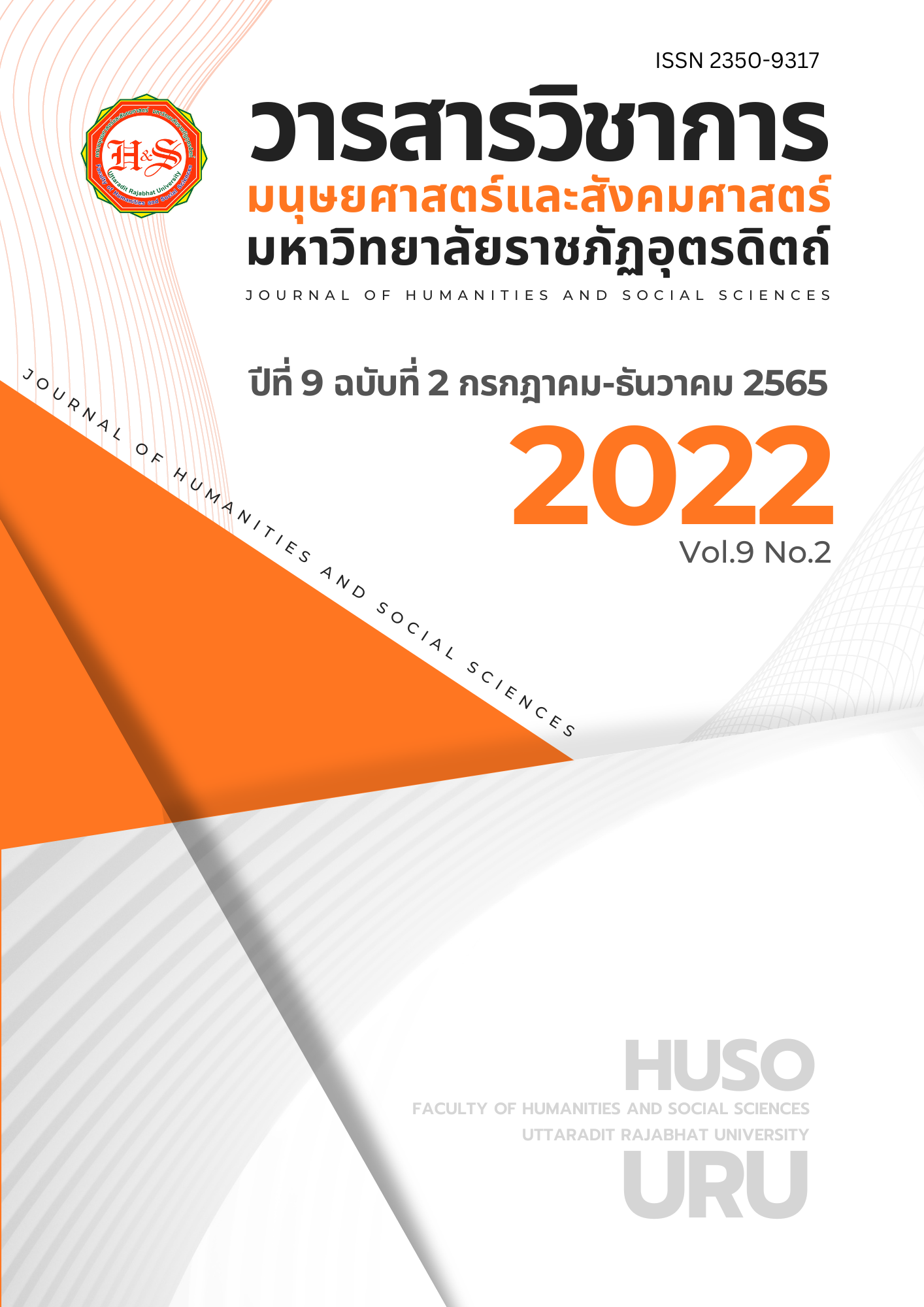The Learning of Time Meter Signature Components.
Keywords:
Learning, Components Time Meter SignaturesAbstract
Rhythm is a fundamental element of music that controls the rate of movement of the melody to be consistent. Therefore, the rhythm is like the pulse of music. In addition, time signatures in music are important in controlling the percussion rate and creating note proportions in a room through the use of Arabic numeral symbols to convey meanings. The top numbers mean the number of beats that are a set in a bar. The bottom numbers mean the criteria that determine different notes to be equal to one beat of the bar. At present tempo marks can be divided into 4 types: Simple Time, Compound Time, Complex Time and Mixed Time. The normal tempo rate is the most popular.
In addition, the rhythm rate also has an irregular value note, a group of melodies that has a large volume of notes. In practice, the percussion rate must be equal to 1 beat and the rhythmic weight of the percussion mark will not be the same. Due to the different proportions of the rhythm within a music bar, a syncopation is another type of the percussion that has a hidden ratio of alternating note rates, makes melodies funny, exciting and challenging to performers and is commonly used with blues and jazz music.
References
กระทรวงศึกษาธิการ. (2539). ดนตรีปริทรรศน์. กรุงเทพฯ : โรงพิมพ์ คุรุสภาลาดพร้าว.
เจนดุริยางค์, พระ. (2527). ดุริยางค์ศาสตร์สากล . พิมพ์ครั้งที่ 4 . กรุงเทพฯ : โรงพิมพ์กรมแผนที่ทหารบก.
ณัชชา โสคติยานุรักษ์. (2543). ทฤษฎีดนตรี. พิมพ์ครั้งที่ 2. กรุงเทพฯ : จุฬาลงกรณ์มหาวิทยาลัย.
ณรุทธ์ สุทธิ์จิตต์. (2538). พฤติกรรมการสอนดนตรี. พิมพ์ครั้งที่ 2. กรุงเทพฯ : จุฬาลงกรณ์ มหาวิทยาลัย.
ตรอง ทิพยวัฒน์. (ม.ป.ป.). ทฤษฎีดนตรีสากลขั้นพื้นฐาน. กรุงเทพฯ : โรงเรียนดนตรีสยามกลการ.
ธวัชชัย นาควงษ์. 2544. โคไดสู่การปฏิบัติ. กรุงเทพฯ : เกษตรศาสตร์.
นพพร ด่านสกุล . (2543). ปฐมบททฤษฎีดนตรี. กรุงเทพฯ : โอเดียนสโตร์.
พิชัย ปรัชญานุสรณ์. (2537). ทฤษฎีดนตรี1. พิมพ์ครั้งที่ 4. กรุงเทพฯ : โรงพิมพ์พับลิคบิสเนสพริ้นท์.
สมชาย อมะรักษ์. (2532). ทฤษฎีสากลเบื้องต้น. กรุงเทพฯ : โอเดียนสโตร์.
สมนึก อุ่นแก้ว. (2544). ทฤษฎีดนตรี. ขอนแก่น : โรงพิมพ์ธรรมขันต์.
Duckworth, William. (1991). A Creative Approach to Music Fundamentals. California : Wadsworth.
Henry, Earl. (2004). Fundamentals of Music. New Jersey : Pearson Prentice Hall.
Mainous, Frank & Ottman, Robert W. (2004). Rudiments of Music. North Texas : Pearson Prentice Hall.
Downloads
Published
How to Cite
Issue
Section
License
Copyright (c) 2022 Journal of Humanities and Social Sciences Uttaradit Rajabhat University

This work is licensed under a Creative Commons Attribution-NonCommercial-NoDerivatives 4.0 International License.
บทความเป็นลิขสิทธิของคณะมส. มรภ อต.



